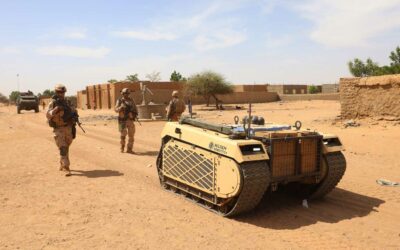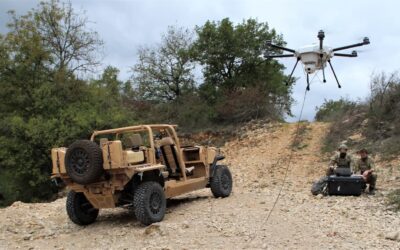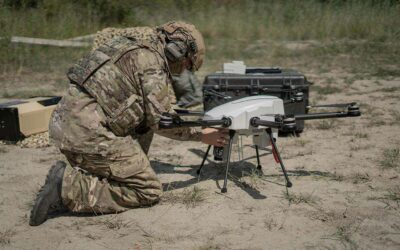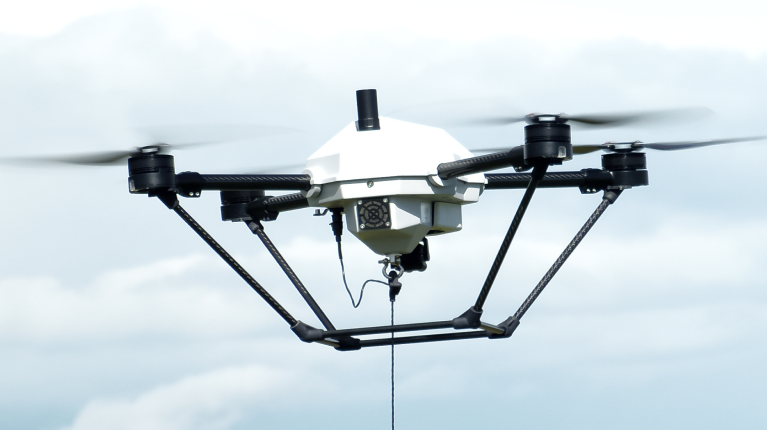Tethered Aerostat Systems and Tethered Drones: Main Differences
Elistair Team
12 minutes
Tethered aerostat systems and tethered drone are both excellent tools for conducting aerial surveillance. The unique characteristics of these platforms make each system perfect for some applications but less ideal for others.
Technological innovations have provided peacekeepers with numerous tools to aid in intelligence gathering. Some of the most valuable tools come in the form of aerial surveillance platforms.
Captive drone and tethered aerostat are two of the most useful platforms for intelligence surveillance and reconnaissance operations. While it may seem like these systems are redundant, their optimal use case is a complementary one.
Tethered Drones Definition
Sometimes called captive drones, tethered drones are uncrewed aerial vehicles (UAVs) that utilize a physical link to provide power.
In some cases, the physical link is also a conduit for communications and data transfer. Typically, the physical connection is in the form of a wire or fiber optic cable. This cable has the ground control station at one end and the drone at the other. In most cases, the drone is a multirotor system.
Captive drones come into two varieties:
- Classic drones: classic UAVs are off-the-shelf units that are temporarily tethered to a ground power station. In general, tethered drone solutions providers manufacture tethering modules, that replace one the the drone batteries. The tether is then connected from the station to the module, and supply the drone with electricity.
- Tethered drones by design: these UAvs are made to be optimal for long duration flights. Engineers aim to maximize compatibility and efficiency among all components during design and testing. Captive by design systems are more persistent and can remain flying for 50 hours. In comparison, classic drones with a tether module are typically limited to around 8 hours.
Elistair’s Khronos DroneBox is an example of a by design tethered drone system, built to provide continuous aerial surveillance. The deployment for this automated drone is less than 10 minutes. Additionally, utilizing a drone like Khronos requires only a single operator to perform all functions.
Tethered Aerostat Systems Definition
A tethered aerostat, also known as captive balloon, is filled with helium or hydrogen. They are used for aerial surveillance and as communication relays. These systems usually have a balloon, a tether, a winch, and sensors attached to the bottom of the balloon. They are much larger than most drones, with lengths ranging from 1 to 75 meters.
- Tactical balloon are the smallest, ranging in length from 1 to 20 meters and climbing to an altitude of 300 meters.
- Operative balloons length is comprised between 20 and 50 meters. Their usually have a maximum height of 1,000 meters. The largest balloons are the strategic class with lengths from 50 to 75 meters and max altitudes of up to 5,000 meters.
Because of their size, tethered aerostat systems need a larger area on the ground. They also require a crew to operate. Depending on the size of the balloon, some of the more extensive systems can demand up to 10 people. The support system on the ground is also significant.
Tethered Drones Benefits and Limitations
Tethered drones can stay in the air for many hours, even a whole day. This is different from free-flying drones, which have batteries that limit their flight time. Beyond this key characteristic, what are the other benefits of tethered drones?
Tethered UAVs are autonomous
Intelligence surveillance and reconnaissance activities require intelligence gathers to maintain their focus. Missing the slightest detail in the data collected could have catastrophic consequences.
For this reason, analysts greatly benefit from the autonomous nature of tethered drones. Tethered drones can operate up to 100 meters above the ground. The entire operation of the system only requires a single person.
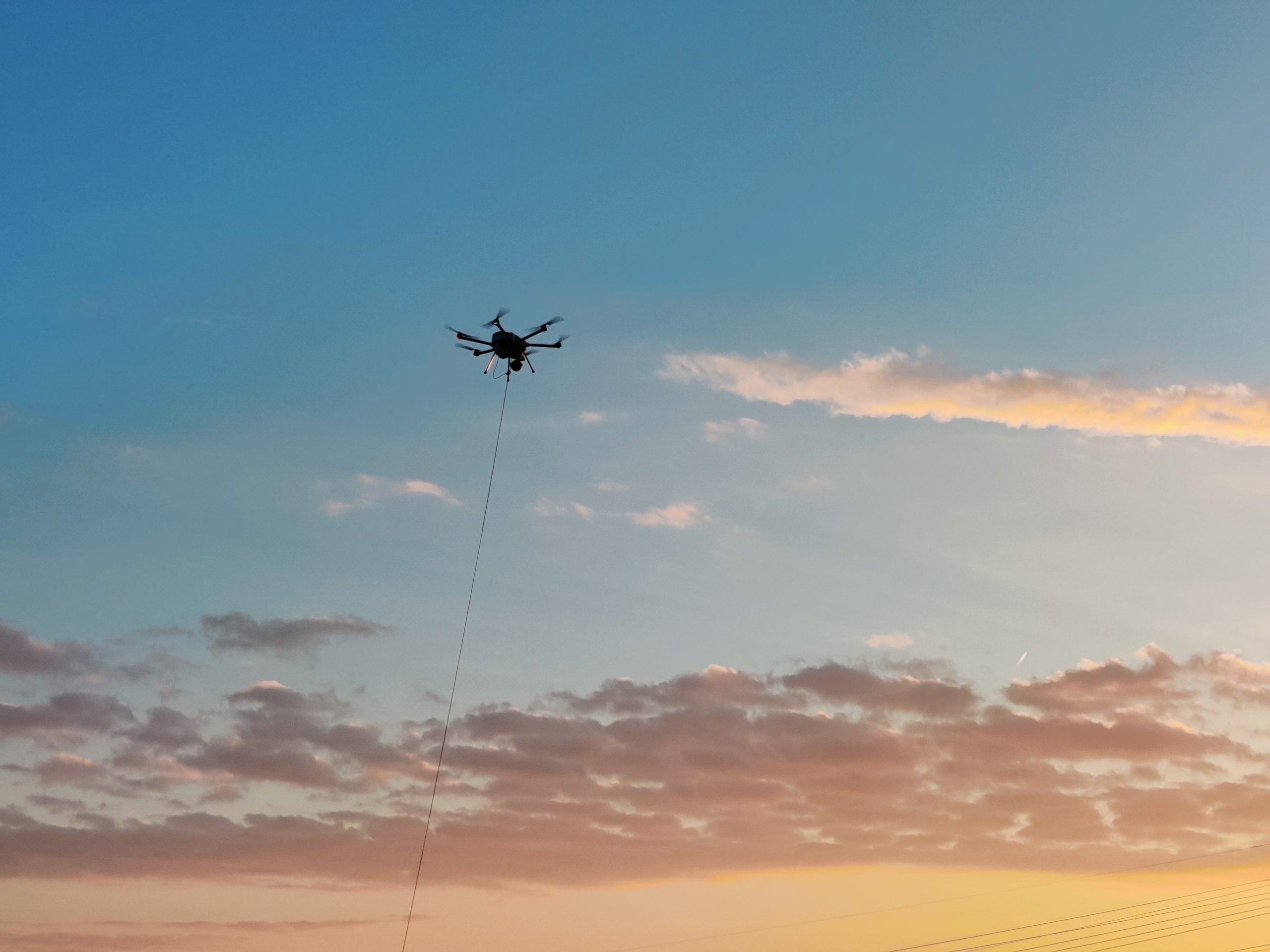
Compact and easy to transport
In addition to a low commitment of human resources, tethered drone systems have a minimal logistics footprint. These units are light and easy to pack. They have swappable arms and legs, which makes them easy to transport, even in small vehicles.
Rapidly deployable systems
Tethered drone systems are rapidly deployable. Security personnel can quickly grab the two hardened cases and the generator and move them to where they need the drone.
If the system is already in a vehicle, the process is even faster. The speed at which one can deploy tethered drone systems is a significant benefit of the platform. Taking the system down when the mission is complete is just as easy as the setup.
A great wind resistance
The design and size of tethered drone systems allow for better wind resistance. This is especially the case when compared to captive aerostats.
Higher wind speed affect the stability of the drone as well as its power consumption. A tethered system receives its power from a generator and not a LiPo battery.
Tethered drones with a low wind resistance can fly in more substantial wind speeds without reducing data quality. As a consequence they offer a greater service continuity.
Less expensive than a tethered aerostat
A final advantage is the cost of these systems. Whereas a captive aerostat can cost millions of dollars, tethered drone systems cost tens of thousands. The relatively low cost allows the technology to be within reach of most governments, militaries, and security forces.
The main limitations of tethered drones
- A lower carrying capacity:
The primary limitations related to tethered drone systems are payload capacity and on-station time compared to captive aerostats.
The payload options for UAVs are constantly benefiting from innovations and advancements in optics capabilities. That being said, there are payload weight limitations that prevent tethered drones from carrying more robust optics packages.
For example, a standard tethered drone can carry up to 2 kilograms. In contrast, a strategic tethered aerostat can carry up to 3,000 kilograms.
- A shorter flight time than tethered aerostat systems:
Tethered drones can remain airborne for 24 hours. This is a substantial amount of time to collect information and conduct surveillance operations. Aerostats can remain airborne for several days allowing for even greater periods of uninterrupted ISR.
Tethered Aerostat: Main Benefits
When comparing a tethered aerostat to other aerial surveillance platforms, balloons have two primary advantages.
Unbeatable flight times
For end-users looking for long-term coverage of a position, captive balloons can remain on station for months at a time. This unmatched duration allows for continuous aerial surveillance.
Given the height at which these platforms operate, they can detect targets at a distance of over 50 kilometers.

Carrying extremely heavy payloads
The second advantage of using tethered aerostat systems is the ability to carry large payloads. Some of the larger platforms can carry payloads weighing up to 3,000 kilograms. Payloads can include radar systems, infrared cameras, video, and communications equipment.
The weight limits of an aerostat balloon give planners room to create custom aerial surveillance solutions. These solutions can meet their specific needs.
An excellent example of captive aerostats is the Tethered Aerostat Radar System (TARS). The payload capabilities of TARS allow for easy detection of targets in the air, on land, and on the water.
Tethered Aerostat Systems Limitations
While the benefits of an aerostat ballon are noteworthy, they have three significant limitations to consider.
- First, these balloons require a considerable commitment of resources. In addition to the cost of these platforms, a complete TARS is nearly $9 million, the logistics footprint is substantial. Hangers, heavy equipment, vehicles, and storage tanks for lighter-than-air gases are essential for working with tethered aerostat systems. These items help in both operating and maintaining the aerostats.
- Another disadvantage, particularly when conducting aerial surveillance, is the size of these platforms. The presence of a captive balloon will be no secret to anyone for many miles. In addition to being easy to spot, they are vulnerable to attack.
- Finally, the size of captive aerostats also causes their use to be weather dependent. The shape and size of these systems make them susceptible to weather conditions. Wind, air pressure, and rain often make using a balloon impossible.
Tethered Drone Use Cases
Many industries have found uses for captive drones to include defense, communications, and public and private security sectors. Tethered drones like the ORION 2 are highly versatile platforms. They include use cases as border surveillance, FOB protection, and tactical communications.
By their nature, borders are areas prone to conflict and criminal activity. The borders of many countries stretch for hundreds, if not thousands, of kilometers.
A country’s borders can cover many types of land, from mountains to rivers. This variety makes it hard to keep track of these boundaries. Fences and walls offer some protection and deterrence, but these obstacles are highly ineffective without monitoring.
The ability for tethered drones to rapidly deploy to an area, especially when mounted on a vehicle, makes them ideally suited for border security. Captive drones have seen successful implementation at high traffic areas like checkpoints and in remote and almost inaccessible locations. They are also very effective at monitoring large crowds.
FOBs allow militaries to project their presence beyond well-established and protected installations. While these locations enable force projection, they expose personnel to more significant dangers. Maintaining aerial surveillance in these locations is essential. Tethered drones are excellent at detecting and preventing attacks and intrusions.
In addition, tethered drones offer secure communications in tactical situations. The data transfer between the drone and station via the tether is a closed system reducing the risks of jamming.
Tethered Aerostat Systems Use Cases
Captive aerostats are performant in the same roles as tethered drones but at a much larger scale due to their size and cost. ISR applications such as Border protection, FOB security, and providing tactical communications are valid use cases for captive aerostats.
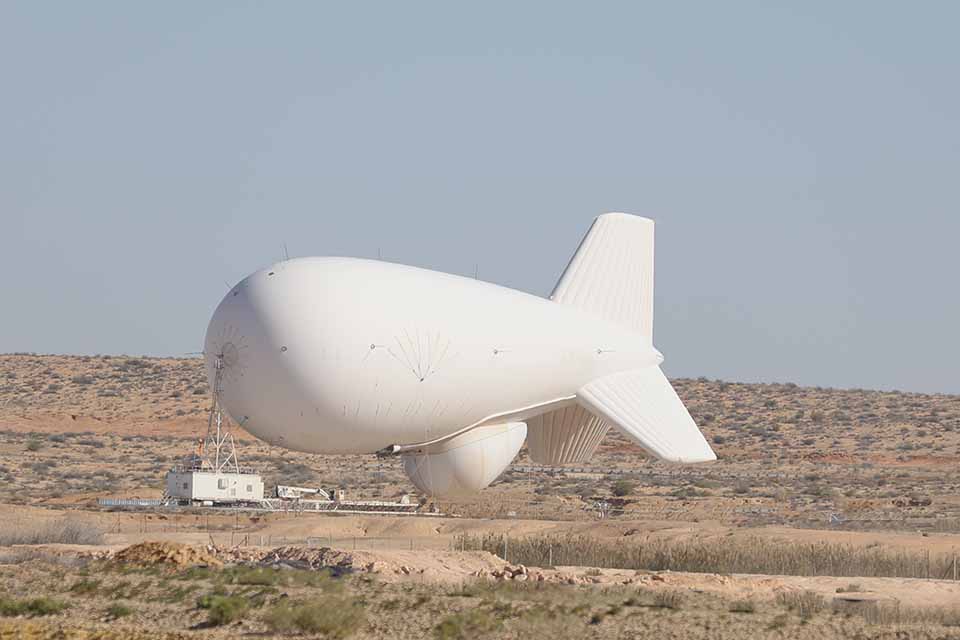
Tethered drones are useful for small to medium FOBs whereas tethered aerostats are adapated for significantly larger installations.
Afghanistan’s most extensive airbase, Bagram, is a great example from recent history:
In addition to the extensive runway and tarmac, the facility has a vast infrastructure covering over 70 square kilometers. Tethered drones cannot effectively cover such an area with multiple entry points and a long perimeter wall.
A tethered aerostat is more than capable of monitoring such an extensive facility. Given the size of Bagram, there is no need for aerial surveillance assets to maintain stealth. The base is wide enough with vast facilities to offer plenty of room for the logistical footprint aerostats require.
Combined Efforts
Tethered drones and captive aerostats complement each other well in the right situations. In the case of border security and FOB protection specifically, pairing these assets is advantageous.
Border checkpoints are often the site of larger cities on both sides of the boundary. The number of crossings can be enormous in a given year. Consider how the combined efforts of tethered drones and captive aerostats could aid in this gargantuan task.
A tethered aerostat could be floating several kilometers away from the border, while tethered drones could be employed at checkpoints and inspection areas directly at crossing points.
Tethered drone systems excel when end-users need mobility and rapidly deployable observation platforms for tactical ISR operations. Tethered aerostat is best employed where the need for long-duration surveillance and heavy payloads is combined with locations that can support their logistics footprint. In many cases, combining these platforms provides the best coverage without sacrificing flexibility. Together, tethered drones and captive aerostats help to build one of the best ISR pictures possible.
Author – David T. Daly

